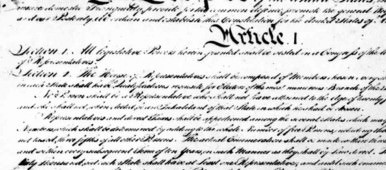
- Mediation
- Arbitration
- Court Neutrals
- Online Dispute Resolution
- Technology
- Court Decisions
- More
- Legislation
- Healthcare
- Guest Posts
- John DeGroote
- John C. Fleming
- Rick Freeman
- Professor Peter Friedman
- Honorable W. Royal Furgeson, Jr.
- James M. Gaitis
- Laura A. Kaster
- Professor John Lande
- Philip J. Loree, Jr.
- Michael McIlwrath
- F. Peter Phillips
- Professor Alan Scott Rau
- Professor Thomas J. Stipanowich
- Professor S.I. Strong
- Richard Webb
- Glen M. Wilkerson
- International arbitration
- Regulation
- Sports and Entertainment
- We’re Back!!!!Well, it’s been a while since we published and that is about to change. Since I spent much of last year becoming
 JAMS Welcomes Karl Bayer to its Panel of NeutralsJAMS, the world’s largest private alternative dispute resolution (ADR) provider, is pleased to announce that Karl Bayer
JAMS Welcomes Karl Bayer to its Panel of NeutralsJAMS, the world’s largest private alternative dispute resolution (ADR) provider, is pleased to announce that Karl Bayer Class Action Waivers in Arbitration Agreements: The Twenty-First Century Arbitration Battleground and Implications for the EU CountriesLinda S. Mullenix, Morris & Rita Atlas Chair in Advocacy at the University of Texas School of Law, has written “Class Ac
Class Action Waivers in Arbitration Agreements: The Twenty-First Century Arbitration Battleground and Implications for the EU CountriesLinda S. Mullenix, Morris & Rita Atlas Chair in Advocacy at the University of Texas School of Law, has written “Class Ac Picking the Proper Technological Tool for Problem-Solving in ArbitrationProfessor Amy J. Schmitz, John Deaver Drinko-Baker & Hostetler Chair in Law and Co-Director of the Translational Data An
Picking the Proper Technological Tool for Problem-Solving in ArbitrationProfessor Amy J. Schmitz, John Deaver Drinko-Baker & Hostetler Chair in Law and Co-Director of the Translational Data An
Recent Posts
Constitutional Conundrums in Arbitration
S.I. Strong, Associate Professor of Law and Senior Fellow at the University of Missouri School of Law‘s Center for the Study of Dispute Resolution, recently published a thoughtful book review entitled Constitutional Conundrums in Arbitration, 15 Cardozo Journal of Conflict Resolution __ (forthcoming 2013). Here is the abstract: Professor Peter Rutledge’s new book, Arbitration and the Constitution (Cambridge University Press, 2013), offers the first comprehensive study of the constitutionality of arbitration. The discussion draws together arguments and evidence from a diverse range of constitutional and arbitral authorities and introduces examples and issues from many different sub-disciplines within the world of arbitration. This review essay considers whether Rutledge succeeds in his bold experiment of blending together two such seemingly diverse areas of law by taking a critical look at the strengths and weaknesses of Rutledge’s analysis while simultaneously setting the book within the context of existing and future forms of constitutional and arbitral scholarship. This and other scholarly papers authored by Professor Strong are available for download (without charge) from the Social Sciences Research Network.
Continue reading...Digital Disagreements: Neural Networks and Their Potential
Neural Networks: The Potential Part 3 of 3 This is the third, and final, installment in a three Part series on the role of Artificial Intelligence in Online Dispute Resolution. Insight into the neural networking aspects of AI is drawn from an interview with Jacob Menashe, Doctoral Candidate in Computer Sciences at the University of Texas at Austin. There is great potential for adapting neural networks for ODR purposes. A neural network works like this: 1. Neural networks are formed from different nodes, or “neurons,” connecting to other nodes. 2. Neurons receive inputs from other neurons and, subsequently, they produce an output that is either intended to be sent along to connected neurons or they create their own output directly.[1] 3. Each output signal is dependent on a processing element, which is also dependent on the input to the processing element. 4. Each input is gated by a weighting factor that determines the amount of influence that the input will have on the output.[2] 5. This weighting factor’s strength is adjusted autonomously by the processing element as data is processed.[3] Put another way, the topology of the way the neurons are connected is where the machine learning takes place.[4] Neural networks learn over time through repetition.[5] Essentially, neurons become correlated by one firing and causing the other to fire, an occurrence that gets stronger the more it is repeated, which is replicated with algorithms in neural networks.[6] For example: If there are three neurons—A, B and C—where A and B connect to C, a particular algorithm can determine that A is a very strong predictor of whatever desired result is identified (outcome Z), whereas B is not a strong predictor of Z.[7] Thus, A will have a stronger weight than B and this connection will become refined through repeated iterations.[8] These iterations generate data and train the neural network to become better and more sophisticated in handling the inputs.[9] A particularly amazing aspect of neural networks is that the programmer “does not have to understand fully the problem the network is trying to solve.”[10] Many machine learning systems require the programmer to have prior knowledge about the domain and insert that knowledge into the system.[11] Neural networks, on the other hand, “are good at discovering solutions that are not expected.”[12] Although neural networks technology is not yet foolproof and the field still must make sizeable advances, eventually the neural networks will be able to figure out a problem so long as a goal is described.[13] The technology is only about twenty to thirty years from empowering computers to take care of specialized tasks, like arbitration, so long as there is adequate “training” (iterations) before the program is launched.[14] Computers may ultimately be proved to be better than humans at cerebral tasks because they can account for more data and have fewer biases.[15] One major problem with the use of neural networks is the lack of explanation the system provides. People want to understand how and why a decision is made. When one uses neural networks to solve a problem, the output provides only the solution, not the reasoning.[16] The decision process employed in neural networks is abstract.[17] The programs find associations, but they do not necessarily “reason” in the way the term is applied to human decision-making.[18] Although this is in line with some forms of arbitration (where no reasoned award is given), it is incongruous with many parties’ expectations and desires. One example is the use of neural networks in deciding whether or not a bank should provide a loan to an individual: the computer may be better than agents at picking which customers would default. This use is not widespread because people do not trust the outcome of the computer and, in the event of rejection, want to understand why they were denied. People need and deserve to understand the rationale behind these important decisions.[19] Even with this problem, the potential use of neural network technology in ODR could lead to a number of interesting applications. Although it is feasible that neural network programs could function as the arbitrators themselves, this application is rather unlikely for a number of reasons: Disputants may desire a reasoned award or may perceive the need for a check on the output of the program. The perception (whether or not warranted) that computers cannot achieve just results will lead parties to choose human arbitrators. Complex disputes may require human interaction and human management. Although neural networks will not replace arbitrators, they can be helpful tools for arbitrators and aid in quick, efficient, and cost-effective resolution of disputes. One potential aid could be analogous to the way IBM Watson, the computer program that beat human contestants on Jeopardy!, is currently being used to aid doctors.[20] The program is used “to create an outcome and evidence-based decision support system. The goal is to give oncologists located anywhere the ability to obtain detailed diagnostic and treatment options based on updated research that will help them decide how best to care for an individual patient.”[21] In arbitration, the database could help arbitrators have instant access to a variety of evidence-based best practices and data relevant to the case—essentially an AI law clerk. This information (at this speed and cost) could provide invaluable benefits to the arbitration process. Another possible application of neural networks is in e-discovery. Potentially, both disputants could plugin to, download, or otherwise network with a computer program that could aid in the speed, accuracy, and fairness of discovery. A neural network program could be designed to comb through the thousands of gigabytes of data and seek specified documents relating to specified parameters and rules chosen by the arbitrator, the disputants, or the party who drafted the arbitration clause. Though it may be difficult at first to get parties to agree to have a “mole” search their servers, businesses might adopt its use with developed trust in the program, increased cost-savings, and a possible independent review before the “discovery record” is published. As one […]
Continue reading...Houston Appeals Court Compels Gas Delivery Dispute to Arbitration
Houston’s First Appellate District has compelled a dispute over a natural gas delivery contract to arbitration despite that arbitration was not expressly required under the parties’ agreement because the dispute could not be decided without considering another contract that required arbitration. In Enterprise Field Services, LLC v. TOC-Rocky Mountain, Inc., No. 01-12-00345-CV (Tex. App. 1st February 28, 2013), the predecessor companies to Enterprise Field Services, LLC (“Enterprise”), TOC-Rocky Mountain, Inc. (“TOC”), and ConocoPhillips (“Conoco”) entered into an agreement (“Straddle Agreement”) regarding the collection and processing of natural gas in New Mexico’s San Juan Basin in 1984. In 2006, Enterprise and BP America Production Company (“BP”), TOC’s parent company, entered into a separate long-term natural gas gathering agreement that contained an arbitration clause. After a dispute regarding natural gas collection arose between Enterprise and Conoco, Enterprise filed a lawsuit seeking a declaratory judgment. TOC was joined in the litigation because the company was a party to the initial 1984 agreement. TOC then filed a counterclaim against Enterprise seeking a declaratory judgment against Enterprise and damages for breach of contract. Not long after the lawsuit was filed, Enterprise settled the company’s dispute with Conoco and filed a motion to compel TOC’s counterclaims to arbitration because TOC allegedly sought a declaration of the company’s rights under the 2006 agreement. The trial court allowed TOC to amend the company’s counterclaim to exclude any reference to the 2006 agreement. The trial court then denied Enterprise’s motion to compel arbitration and Enterprise filed an interlocutory appeal with Houston’s First District. On appeal, Enterprise argued that the trial court committed error when it determined TOC’s amended counterclaim was not subject to arbitration pursuant to the parties’ 2006 agreement. The appeals court stated, Enterprise argues, and we agree, that the 2006 Gathering Agreement is part of the parties’ course of dealing and its terms would necessarily be considered in any litigation involving construction of, and performance under, the Straddle Agreement. TOC’s counterclaim is based on the argument that Enterprise was obligated to continue allocating NGLs in accordance with the provisions of Exhibit B of the Straddle Agreement, while the Gathering Agreement contains terms indicating that the parties desired to adopt a new, different method of calculating NGLs, although they had not done so at the time the Gathering Agreement was signed. The court continued, We express no opinion as to the merit of Enterprise’s positions regarding construction, and possible modifications of the Straddle Agreement by the later Gathering Agreement, but agree that claims for a breach of performance under the Straddle Agreement will necessarily involve the interpretation of provisions of the Gathering Agreement, and specifically, the interpretation of section 9.6 of the Agreement. As such, the trial court erred in concluding that TOC’s counterclaims did not fall within the scope of the arbitration agreement in the 2006 Gathering Agreement. Next, the appellate court dismissed TOC’s argument that the company was not bound by the 2006 agreement because it was signed by BP. According to the court, In its First Amended Original Counterclaim, TOC refers to itself at “BP.” It has never complained, either in its pleadings or elsewhere, that it is not bound by the terms of the Gathering Agreement. Thus, it may not now do so before this Court. The First District then dismissed TOC’s claim that Enterprise waived arbitration by invoking the judicial process. The appeals court stated, There is a strong presumption against finding that a party has waived its right to arbitration; the burden to prove waiver is thus a heavy one. In re Bank One, N.A., 216 S.W.3d 825, 827 (Tex. 2007); In re D. Wilson Const. Co., 196 S.W.3d at 782. Any doubts regarding waiver are resolved in favor of arbitration. The Houston court continued, When Enterprise filed the present suit, its initial claims were against Conoco and did not involve TOC’s 2006 Gathering Agreement at all. Once Enterprise added TOC to the suit, and TOC filed its counterclaims, Enterprise promptly moved to compel arbitration under the 2006 Gathering Agreement. Discovery in this case has been minimal and the case has been stayed for most of its duration. Enterprise has not sought judgment on the merits. Finally, the First District held that the trial court committed error when it found that Enterprise waived its right to arbitration. Texas’ First District held, Because TOC’s counterclaims are within the scope of the arbitration agreement and Enterprise did not waive arbitration, we hold that the trial court erred by denying Enterprise’s Motion to Compel Arbitration. Accordingly, we reverse the trial court’s order and remand for further proceedings compelling arbitration.
Continue reading...Digital Disagreements: Artificial [Intelligence] Arbitration
Part 2 of 3 This is the second installment in a three Part series on the role of Artificial Intelligence in Online Dispute Resolution. Please join the conversation and comment below. ODR and AI The subfield of Artificial Intelligence [AI] in Online Dispute Resolution has been progressing rapidly. There is no doubt that it will have a broad impact. Law and AI are particularly well-suited to work together as they have a shared method with set rules and guidelines for determining how a decision is made and a problem is solved.[1] Both use “semi-formal modeling”—in law, this takes “the form of binding precedents and statutory rules,” whereas AI uses “logical representations[.]”[2] These logical representations are facilitated through different types of programming tools, in particular, machine learning. Machine learning is a means by which computers actually learn knowledge,[3] attempting to mimic neural networks.[4] This branch of AI is particularly exciting because—as the technology progresses—a computer will be able to learn to solve problems, including legal problems. Interestingly, recent research suggests that AI could be used to determine whether a statement was true of false and help robots replace jurors. Already AI is being used in ODR systems. As discussed in Part One: An Introduction to Online Dispute Resolution, Cybersettle is a simple rule-based reasoning tool that aids in conflict settlement. Other programs are tasked with “understanding a problem, generating a plan for its solution, evaluating feedback from disputants and recovering from reasoning failures.”[5] More developed negotiation support systems, such as Smartsettle, use “bargaining ranges” developed from the parties’ “optimistic values.”[6] Adjusted Winner uses an algorithm for “divid[ing] n divisible goods between two parties as fairly as possible.”[7] Both systems employ game theory to reach “fair solutions.”[8] A model used in divorce is Family_Winner. It, “takes a common pool of items and distributes them between two parties based on the value of associated ratings. . . . [The] ratings sum to 100; thereby forcing parties to set priorities.”[9] A more recent example is the new, fully automated dispute resolution system for ACI, a payment system provider, which is expected to reduce claim time and increase efficiency by a third.[10] Justice and AI One issue common to each system is justice.[11] Fair results may not necessarily be just. For example, Family_Winner has been criticized for relating to the divorcing parties’ preferences and not those of dependents such as children.[12] Even though humans can—and do—get legal decisions wrong, society perhaps still would rather apply human judgment than give full control to a machine.[13] Many consider justice to be a uniquely human ideal, one that may be difficult to impart on AI, no matter how sophisticated the programming is. Security and AI Another major concern with using AI in ODR is security. Disputants want to be certain that their dispute and related documents remain private—a key advantage when choosing arbitration. Some may be concerned that using a system solely over the internet would allow for the possibility that a program could be hacked with the intention of altering outcomes. Other concerns center around the fear of documents being intercepted or found on servers and databases. However, the real concern should not be with the programs or documents, but rather with the human element involved in administering[14] an arbitration provider’s program. If used correctly, current “security measures are essentially unbreakable.”[15] When the employees of an arbitration provider follow protocols[16], the arbitration itself can reasonably be considered secure. These protocols include among other things: Using private databases Strong passwords Multiple forms of access (for example, two-factor authentication) Quality software.[17] People and AI Public opinion may be the biggest barrier to implementing a completely automated arbitration system.[18] People do not trust computers in the same way they trust human judgment,[19] especially in areas traditionally considered to involve expert and human evaluation. For AI to become useful in ODR, it will have to be adopted by clients and trusted by those who use the system. Misguided human perception must be overcome to see widespread use of AI for resolving disputes. One means for accomplishing this is using a human facilitator along with AI programming. A person would be the intermediary between the disputants and the program. This facilitator would not only help input information into the program and help interpret the results the program developed, but also aid in providing a human element in the dispute resolution process, which may be both needed and desired. The determination of how an AI program models problems to be solved (and how narrow or broad the parameters are) involves a similar form of logical modeling as the study of law. These logical modeling similarities include: How the legal issue is framed How the legal problem is solved How the decision is reached Although this may be the most difficult aspect of implementing AI for ODR, some forms of machine learning such as neural networks—discussed in Part 3—do not encounter this problem as much as others. Interconnected with system programming is the issue of defining how an AI system minimizes bias. Although human bias will not be an issue, informational, institutional, and programming bias may affect outcomes, and great care must be taken to ensure the process remains as neutral as possible. Effective communication is a crucial aspect of implementing AI. Users must be able to communicate not only with one another, but also with the program and providers of the AI ODR system. To generate trust in using the program, users need to understand the process and know what to expect from the program. This involves a great deal of care on behalf of the program provider. Finally, communicating the program’s effectiveness to the public at large is important to maintain a perception of fairness—as well as to develop a clientele. Finally, one of the greatest challenges for AI use in ODR is determining […]
Continue reading...Arbitration
This week, the National Academy of Distinguished Neutrals (NADN) announced a partnership with DRI – The Voice of The Defense Bar and the American Association for Justice (AAJ).
Continue reading...Mediation
Healthcare Disputes
Legal Research
About Disputing
Disputing is published by Karl Bayer, a dispute resolution expert based in Austin, Texas. Articles published on Disputing aim to provide original insight and commentary around issues related to arbitration, mediation and the alternative dispute resolution industry.
To learn more about Karl and his team, or to schedule a mediation or arbitration with Karl’s live scheduling calendar, visit www.karlbayer.com.













